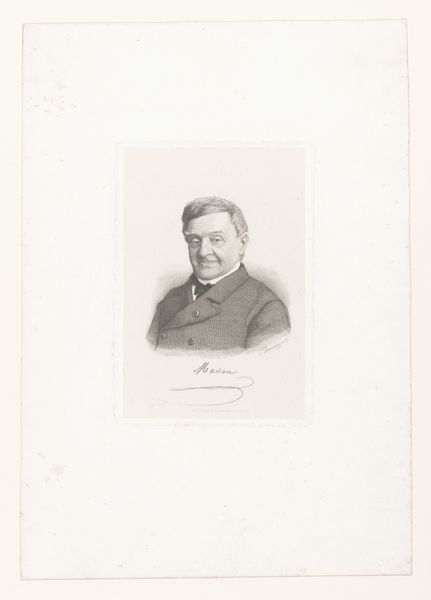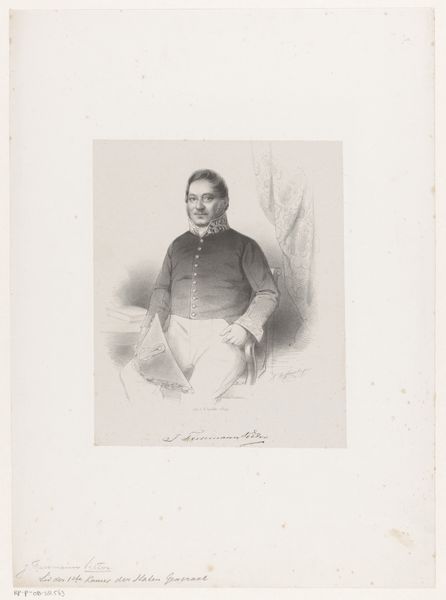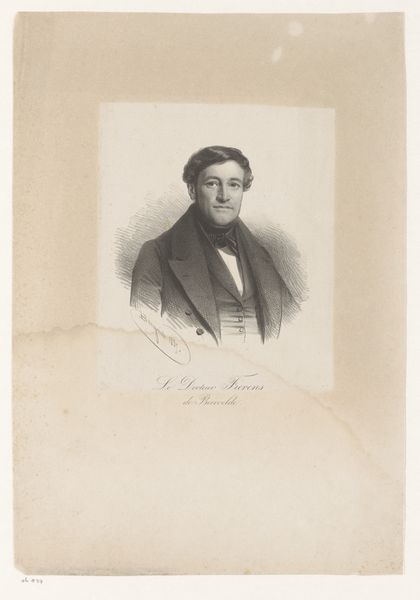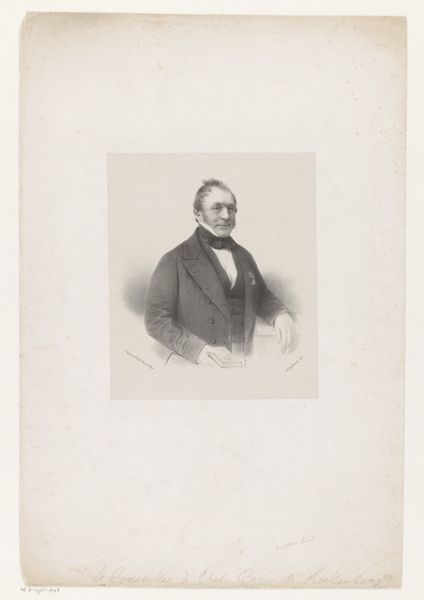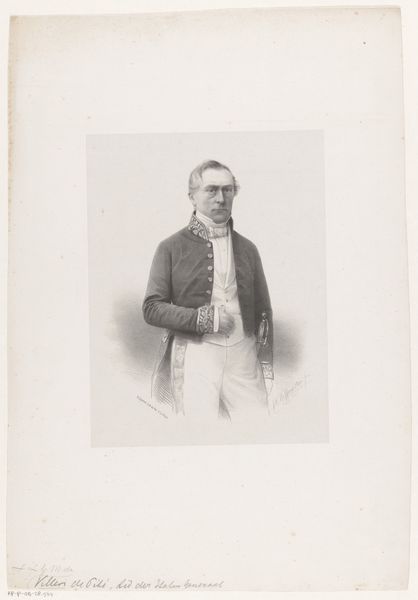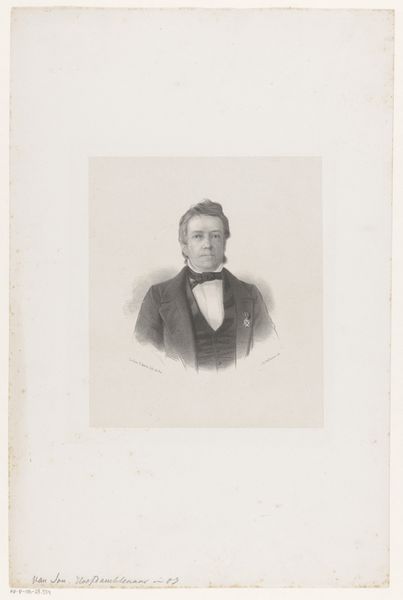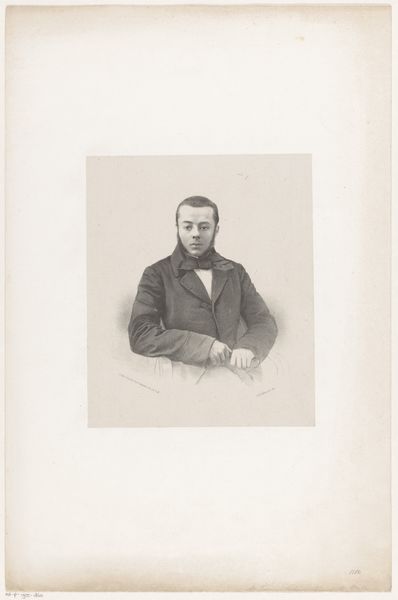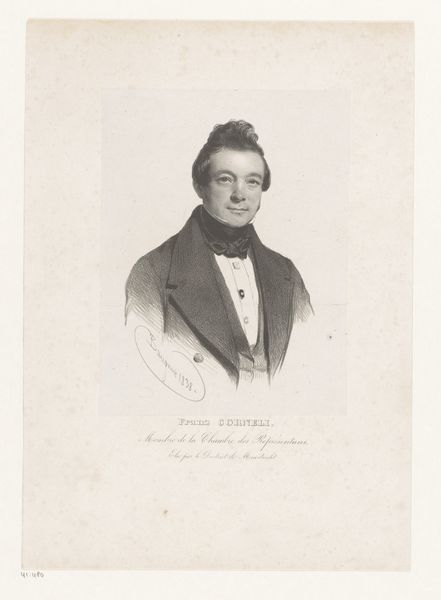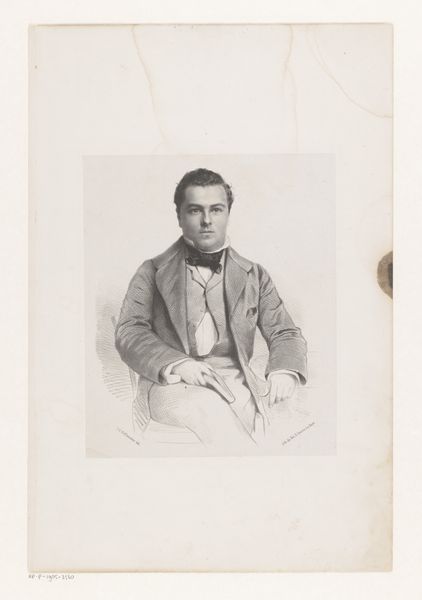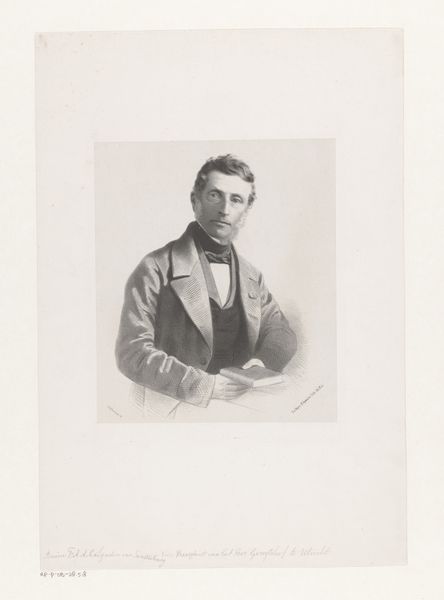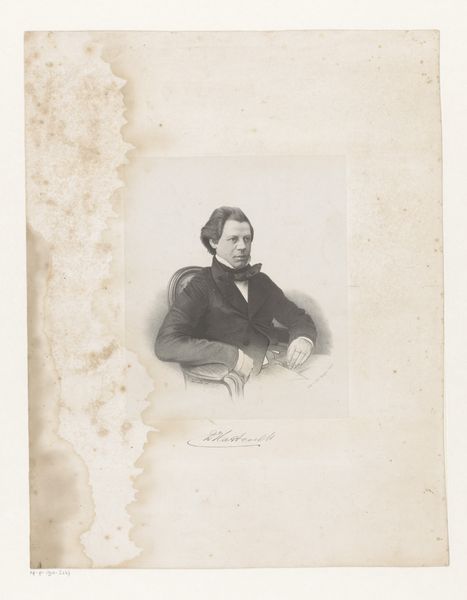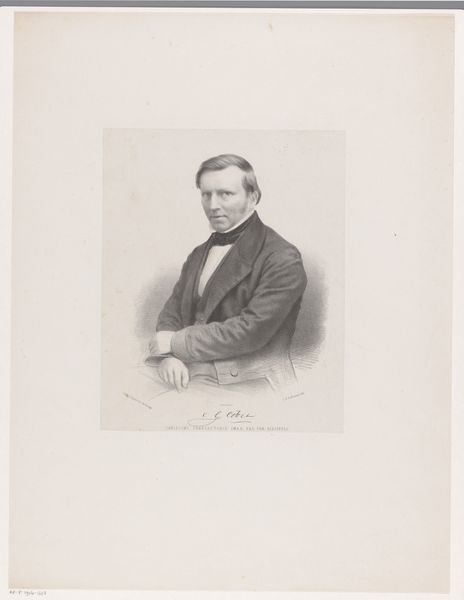
drawing, graphite
#
portrait
#
drawing
#
historical photography
#
graphite
#
academic-art
#
realism
Dimensions: height 350 mm, width 287 mm
Copyright: Rijks Museum: Open Domain
Curator: This is a drawing titled "Portret van Bonifacius de Jonge" attributed to Johan Hendrik Hoffmeister, created sometime between 1851 and 1883. It is rendered in graphite. Editor: My immediate impression is of subdued dignity. The muted tones and almost photographic realism lend it a gravitas, don't you think? Curator: Absolutely. The composition reinforces this; notice the deliberate use of chiaroscuro, where the careful balance of light and shadow sculpts the figure, emphasizing texture, especially the fabric of his suit. Consider the artist's intention to meticulously represent not only the physical appearance of Bonifacius, but also aspects of his social status. Editor: Agreed. A work like this provides a valuable lens through which to examine the aspirations and self-representation of the Dutch middle class during the mid-19th century. How does the portrait fit into broader trends of portraiture at the time? Were these works usually commissioned, or were they also made to represent a rising sense of patriotism? Curator: One might see, perhaps, academic conventions. It echoes the aesthetics favored in European academies. We see it with the precision, the focus on likeness. But look at the contrast in the drawing style used in the face and the clothes. Are you reading this difference as conveying personality, character through that rendering? Editor: Perhaps. Also the blank background places all the emphasis on the subject himself. To what extent was an absence of external detail a sign of sophistication at that point, a departure from earlier traditions of placing the sitter in an aristocratic surrounding? Curator: Yes, and notice how his gaze, directed just off-center, seems to engage us indirectly, creating a sense of quiet confidence. Editor: A powerful, introspective portrait. I find the lack of overt symbolism interesting; its power comes from restraint. Curator: Indeed. The work prompts me to consider the function of art in preserving memory.
Comments
No comments
Be the first to comment and join the conversation on the ultimate creative platform.
